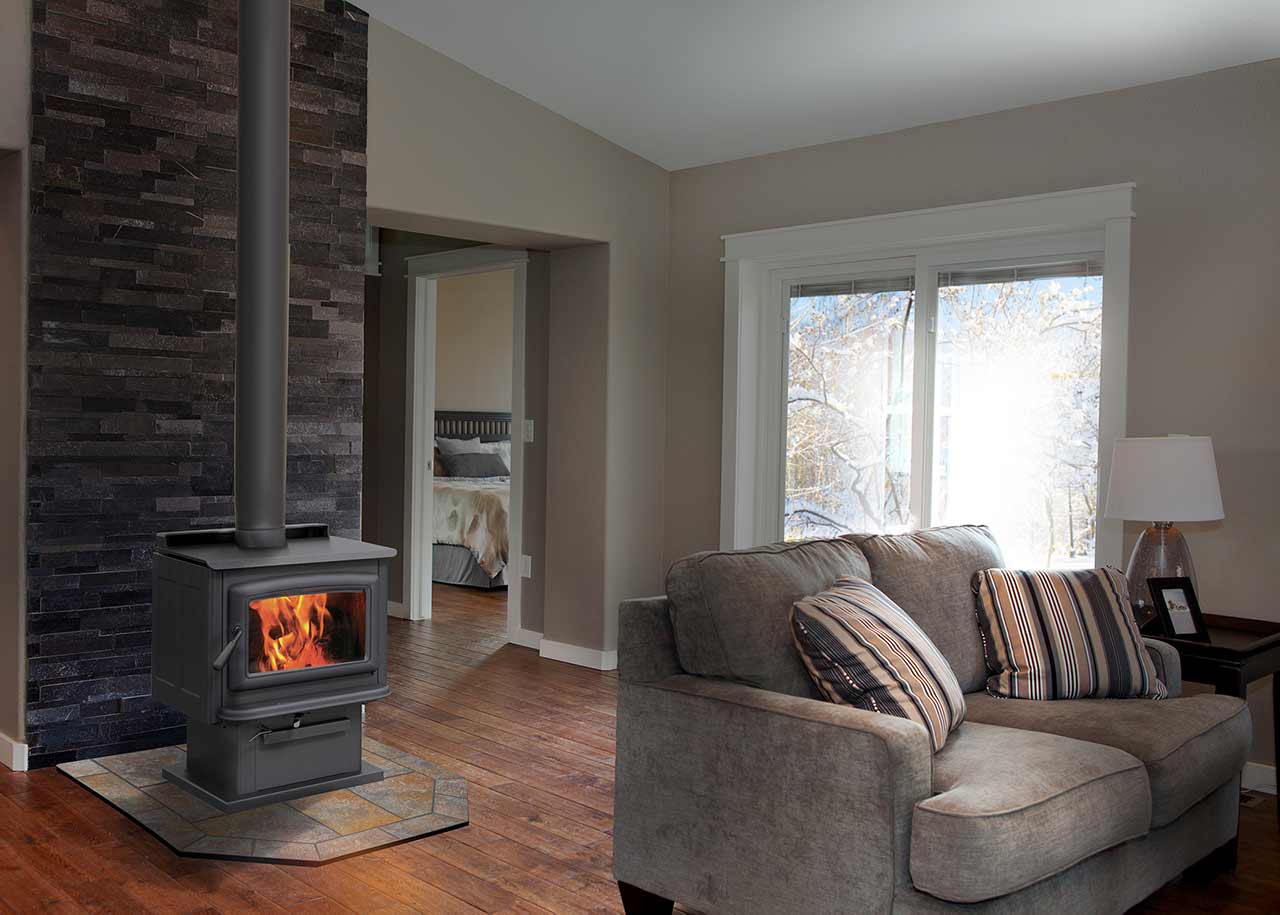Story at a glance:
- Extreme temperature swings are coming, urging many homeowners to prepare their homes for the upcoming winter.
- Products like stone wool insulation, metal roofing, and radiant heat can help homeowners both stay warm and save on energy.
- Sustainable design solutions can help improve quality of life while simultaneously having a positive impact on the environment.
As we exit a summer of some of the most extreme heat waves ever recorded, experts are predicting an even harsher winter plagued with bitter, arctic winds and bouts of heavy snow. In the US alone, more than 50% of the nation still relies on the burning of natural gas and coal for energy production. During the winter months this energy consumption skyrockets to heat millions of homes, resulting in the continuous pumping of CO2 into the atmosphere.
In the wake of the new climate bill, there’s a big push to move toward renewable, sustainable energy options. Here are seven sustainable design solutions that may help homeowners keep warm this winter.
1. Metal Roofing
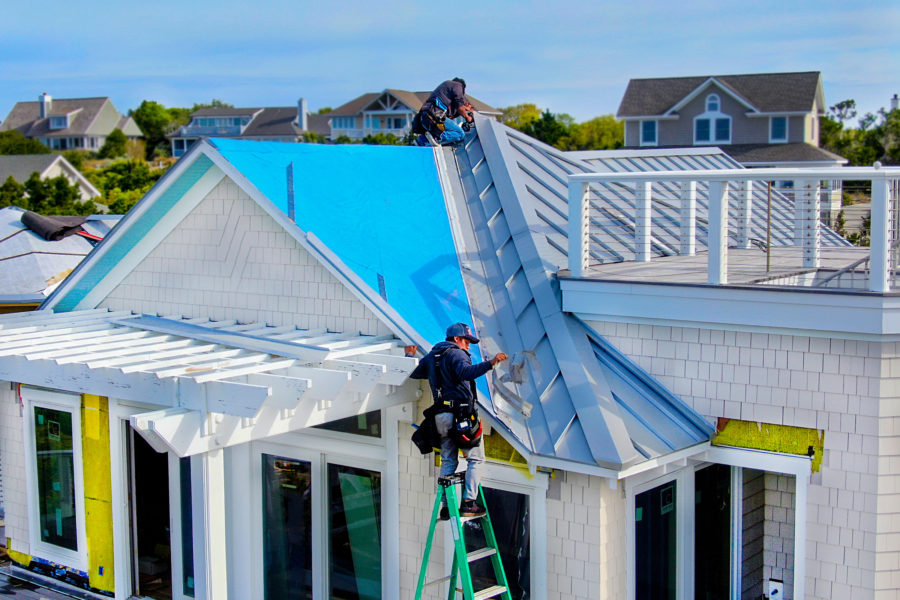
Englert offers an array of standing seam metal roofing options that vary in both design and colors. Photo courtesy of Englert
From copper and bronze to iron and steel, metal has long been a durable and appealing material to work with. But it wasn’t until 1829 when corrugated iron was galvanized that the concept of metal roofing started to gain in popularity. Metal roofing technology continues to evolve today, now making use of different alloys and coatings to accommodate various climates and temperatures.
“Durability allows the metal to withstand the climate and harsh weather conditions,” wrote Ernesto Infante, a product solution consultant for Englert, in a previous piece for gb&d. “While other materials can be easily damaged, metal components can hold a structure together and maintain water tightness through the increasingly extreme weather events seen today like hailstorms and hurricanes, especially when it comes to metal roofing.”
Englert offers an array of standing seam metal roofing options that vary in both design and colors, including Bone White, Hemlock Green, and more traditional copper and bronze.
2. Solar Power
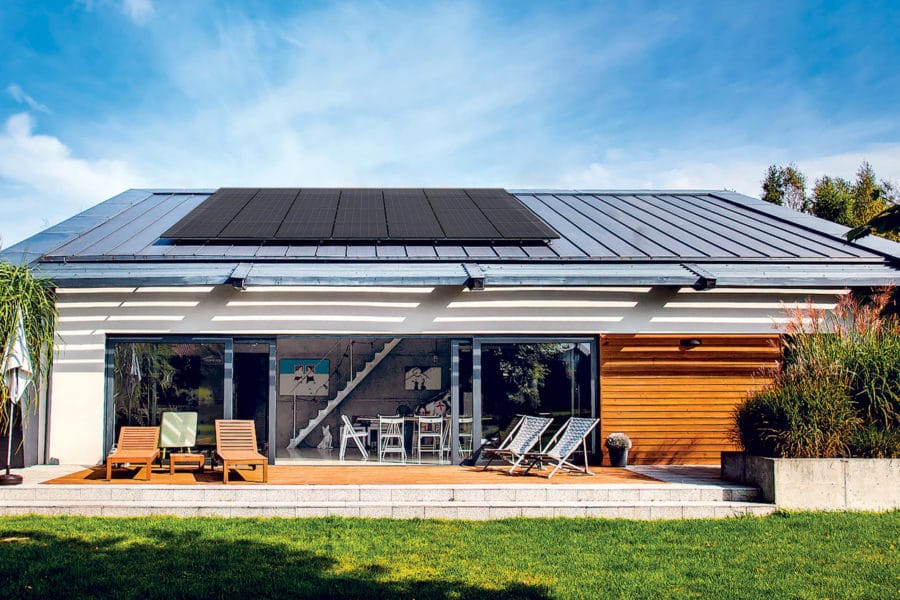
Q Cells considers its Q.PEAK DUO the BMW of solar. It is highly efficient yet cost-effective. Photo courtesy of Q Cells
An increasing number of architects and designers are incorporating photovoltaic (PV) panels into their roof plans. Using PV technology can help manage the cost of energy in a home as well as aid in bringing down the overall carbon footprint that the burning of fossil fuels have produced.
Though there are many options for PV panel installations, Q Cells offers a reliable set of solar products that will help homeowners to manage and ultimately take control of their energy costs. “To get the most out of solar panels you need proper planning, design, and installation,” Ralph Alvarado, product manager for PV products at Q Cells, wrote in a previous article for gb&d. “The property needs to be inspected to determine the sun’s path and potential shade structures. The roof needs to be properly configured for optimal energy collection.”
Q CELLS offers highly efficient, cost effective modules that are crafted for an array of real-life conditions.
3. Wood Stove
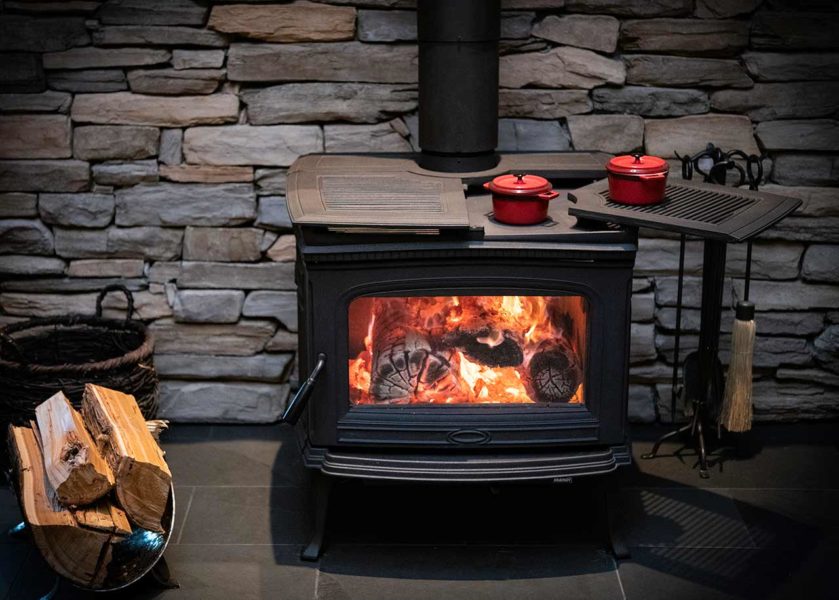
Through their unique use of a hollow baffle system, Pacific Energy’s non-catalytic stoves perform under the two-gram standard. Photo courtesy of Pacific Energy
Nothing says winter more than cozying up to the warm glow of a crackling fireplace. Woodburning is one of the cheapest ways to heat a home, but the smoke can be detrimental to both our health and the environment via particle pollution. Modern stoves are regulated to a strict two-gram particulate per hour standard by the EPA, and most achieve this through the process of catalytic combustion but there are other options.
In the realm of non-catalytic stoves, Pacific Energy offers an array of EPA certified design choices. Through their unique use of a hollow baffle system, Pacific Energy products perform under the two-gram standard. The stoves can come in either steel or cast iron, along with other aesthetic choices.
4. Isokern Fireplace
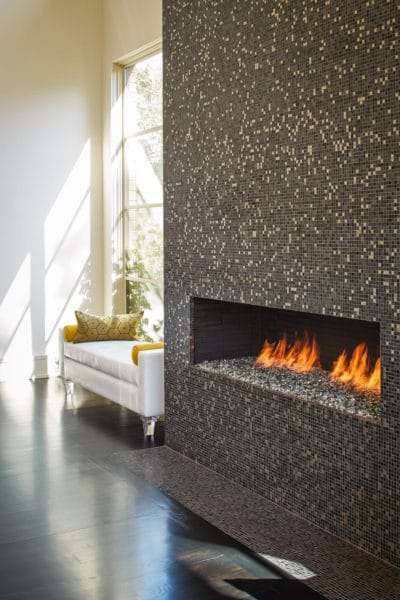
Other than offering customizable design, Earthcore is sustainable, too: The company has a less than 1% carbon footprint and uses nearly all of its materials during manufacturing. Photo courtesy of Earthcore
When looking at more contemporary fireplace options, Earthcore offers sustainable isokern fireplaces that are built to design. Unlike traditional brick-and-mortar fireplaces, isokern fireplaces use pumice: highly pressurized, porous stones created from infusing gas bubbles into molten magma from a volcano.
“Fire and concrete don’t like each other. It eventually cracks and fails,” said Carl Spadaro, CEO of Earthcore, in a previous interview with gb&d. “You’re using materials that are 6,000 years old. Nothing beats a volcano.” The pumice in isokern fireplaces allows for quick heating and long retention, making it more efficient than the traditional brick installations.
Earthcore has a network of 10 solution centers across the country and is available through more than 400 dealers nationwide.
5. Radiant Heat Options
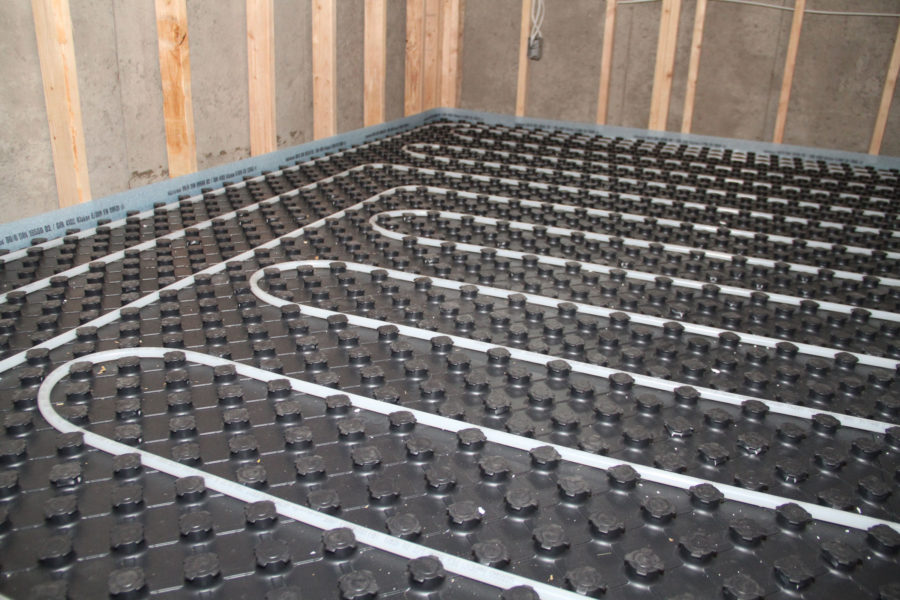
Hydronic radiant floor systems not only promote cleaner indoor air, but also boast a higher energy efficiency than standard air heating systems. Photo courtesy of Uponor
Radiant heat, the warmth you feel from a hot stovetop element or a bright, incandescent light bulb, has been a popular, efficient heating option for a while. Hydronic radiant floor systems use heated water pumped from a boiler through tubing installed under the floor. The warmth from the flowing water radiates from the floor to heat the room comfortably.
Hydronic radiant floor systems not only promote cleaner indoor air but also boast a higher energy efficiency than standard air heating systems—making them one of the more popular sustainable design solutions to date.
“Water has the capacity to transport energy 3,500 times greater than air,” said Kim Bliss, content development manager at Uponor, in a previous gb&d submission. “That means a hydronic radiant heating system that uses water to heat a space rather than air will be much more energy-efficient. This is especially important because heating and electricity generation accounts for nearly 25% of all greenhouse gas emissions.”
Both Uponor and Barcol-Air offer quality hydronic radiant floor systems for both commercial and residential properties.
6. Stone Wool Insulation
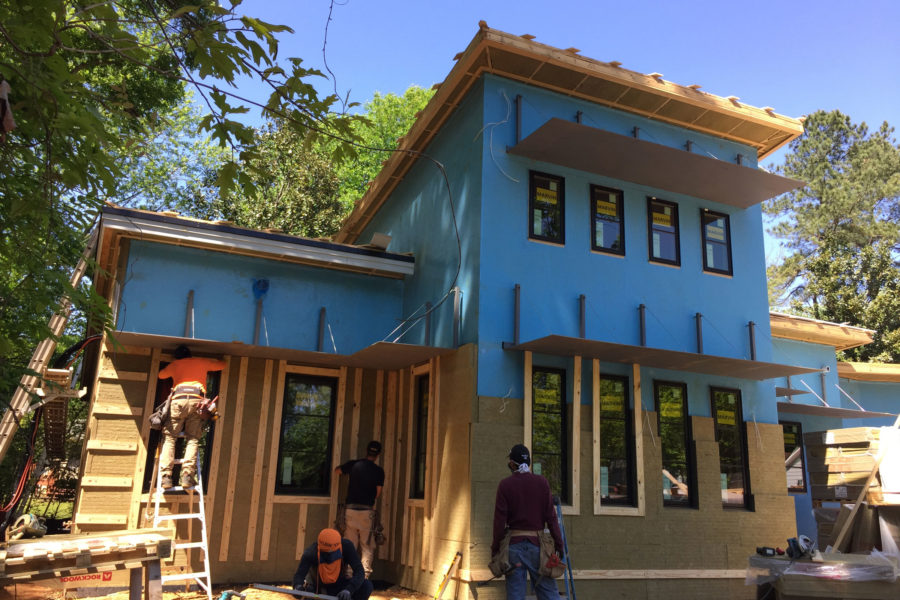
Chris Laumer-Giddens of LG Squared says he like using ROCKWOOL insulation in his projects because its formula has less irritants and is easier to work with. Photo courtesy of LG Squared
Regardless of the heating options, without proper insulation it’s difficult to efficiently control the temperature of a home. Quality wall insulation has many positive benefits, from improving the acoustics in a home to keeping energy consumption down, and it can come in many forms, from foam polystyrene slabs to solid concrete.
Stone wool is a great sustainable solution. Stone wool has a high thermal performance and is both fire- and bug-resistant. It can come in a rigid form that makes for easy installation, and it even staves off moisture and mold.
Rockwool offers quality stone wool insulation that’s performance tested and ranked high in usability among the residential construction market. Rockwool is also committed to keeping sustainability a core value of their operation by engaging in effective collaboration with their manufacturers and recycling facilities to make sure that everything gets its proper use.
7. Foam Insulation
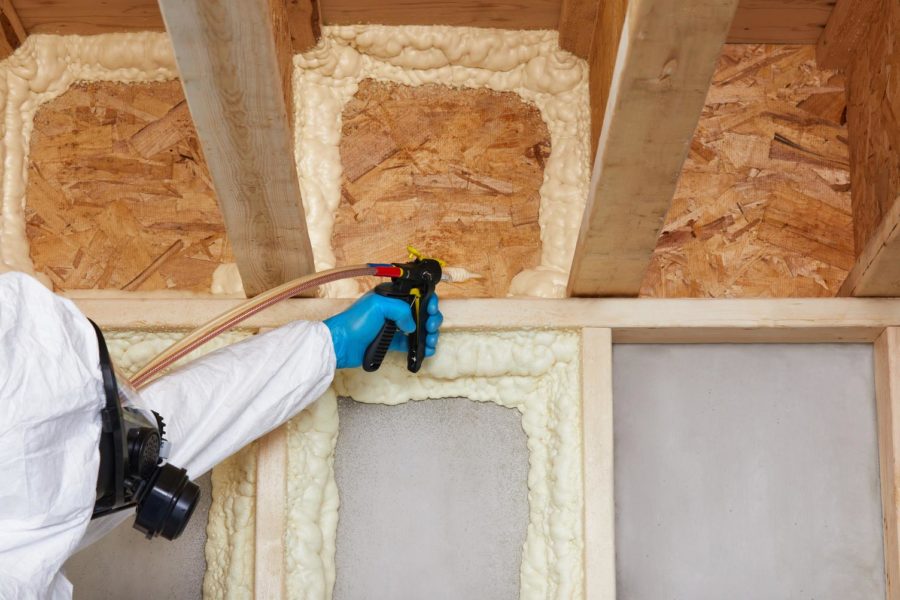
Froth-Pak is an all-in-one kit for contractors to quickly and efficiently seal out moisture, dust, and allergens and improve energy efficiency, building resilience, and comfort. Photo courtesy of DuPont
Spray foam insulation has become a quick and popular sustainable design solution for many DIY home renovators. DuPont offers various spray foam products—from their Great Stuff line that aids in air sealing gaps for retrofit applications to their larger scale Froth-Pak option that’s capable of filling full cavities.
“Froth-Pak is an all-in-one, self-contained, easily portable kit for our professional contractors to quickly and efficiently fill larger gaps and penetrations to seal out moisture, dust, and allergens while improving energy efficiency, building resilience, and comfort for homeowners,” said Amy Radka, DuPont’s retail marketing director, in a previous gb&d submission.
Properly installed sealing and foam insulating products like Froth-Pak or Great Stuff Pro can help to reduce homeowners’ heating and cooling bills.

